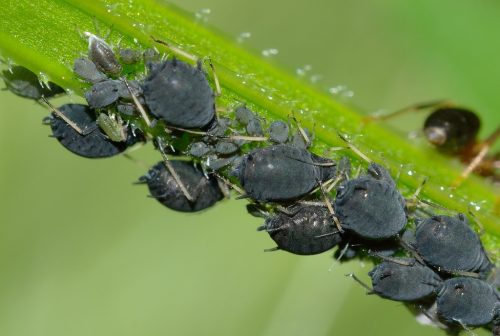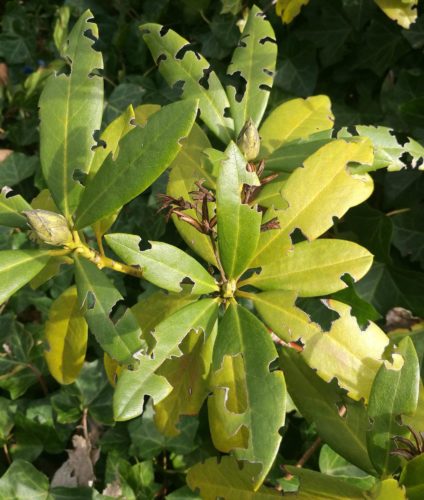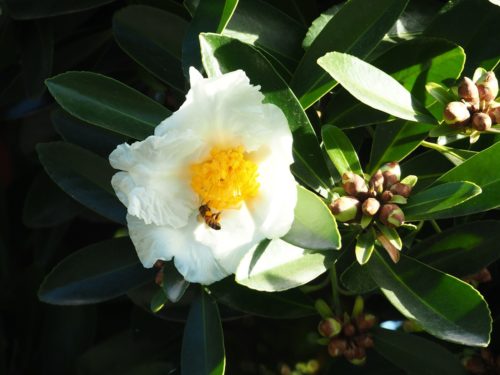Camellia, an evergreen shrub or small tree and related to the tea plant.
You are viewing the mobile-adapted version of the page.
The one for tablets, laptop and desktop also provides general information, such as origin, toxicity and cultivation.
Camellia – (Camellia), an evergreen shrub or small tree and related to the tea plant (Camellia sinensis). The shrubs can grow into substantial bushes of + 4 m high and 2.50 m wide. Camellias bloom with large flowers from February to April. Flowers are predominantly pink, red and white.
Camellia Japonica is most commonly used in the ornamental garden. Camellias like humus-rich, somewhat acidic soil; lime is poorly tolerated. Plant the camellia in a sheltered spot in semi-shade: not in full sun, nor in a windy spot, nor against a wall. Buds need coolness to sprout. Camellias are prone to drying out in summer (sun) and in winter (wind). Camellias are somewhat hardy, although the flowers may be affected by night frosts in early spring. Fertilize in March and in June/July.
In areas with hard, calcareous water, use rainwater for the camellia; rainwater is lime-free.
Camellias do well in containers and large pots. Move the container-grown camellia to a sheltered spot in shed or garage in autumn. In the fall, also water regularly (once every few weeks). Fertilize the container-grown camellia when the buds begin to swell in spring. Annual repotting is not necessary; change the topsoil in early spring. Camellias in greenhouses are sensitive to aphids.
Camellias can be pruned; this will not be much, as they are slow growers. Limit pruning to a single disfiguring branch. Avoid excess water in the container or pot: roots standing in water rot.
Bugs

Aphids on the leaves, flower buds and stems. sometimes accompanied by ants that “milk” the aphids for honeydew. The dark spots on the leaves consist of honeydew with a layer of dark mold (sooty mold).

Semicircular bites from leaf margins: Vine weevil (Otiorhynchus sulcatus).
Fungi & diseases
Camellia lags in growth, leaves curl, turn yellow or red; bark at base of plant turns brownish red. The roots show the same discoloration: Root rot (Phytophthora).
Other
In container-grown camellias: Leaves turn yellow and fall off. Usually this is caused by drought or the opposite by too much water.
Flower buds fall off in spring. This is the result of a period of drought during budding in late summer. Regular watering in early fall prevents bud drop in spring.
During hot summer weather (temperatures above 30ºC), “burn marks” appear on the leaves: sunburn.

Brown edges on flowers in February/March: frost damage.

